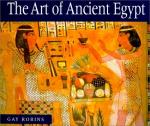|
This section contains 483 words (approx. 2 pages at 300 words per page) |

|
Flourished Circa 1104-1075 B.C.E.
Expedition Leader
Man of Mystery. Wenamun may have been a literary creation or a real person. He appears in the Papyrus Moscow 120, a report of his trading mission to Lebanon. Little is known of his personal life except that he was an Elder of the Portal of the Temple of Amun in Karnak. Herihor, High Priest of Amun, and effective ruler of Upper Egypt by 1075 B.C.E., sent Wenamun to Byblos to obtain cedarwood for a new barque of Amun-the ceremonial boat that the statue of the god used in traveling.
Robbery. Wenamun's journey reflected the declining fortunes of the New Kingdom (circa 1539-1075 B.C.E.) state at the end of Dynasty 20 (circa 1190-1075 B.C.E.). He traveled to Byblos in a boat crewed by Syrians rather than Egyptians. Unlike the bureaucrat Harkhuf in the Old Kingdom (circa...
|
This section contains 483 words (approx. 2 pages at 300 words per page) |

|




